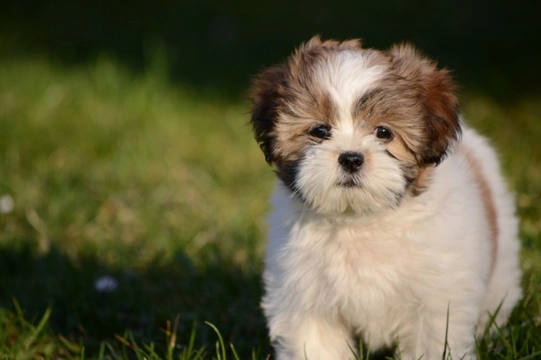
Ten things you need to know about the Lhasa Apso dog before you buy one
The Lhasa Apso is a very elegant and distinctive looking small dog breed that is very popular with people from all walks of life, as well as being one of the most popular small breeds in the UK overall.
Ranked in 33rd place out of a total number of 244 different dog breeds and types commonly offered for sale in the UK, the Lhasa Apso has a lot of good points that helps to ensure that they’re a good fit for many different types of homes and owners.
Their small size also makes them versatile enough to live comfortably in even smaller households, which helps to increase their appeal – and this means that a great many prospective Lhasa Apso owners each year begin researching the breed with a view to buying a Lhasa of their own.
It is really important to do your homework before committing to buying a dog of any type, and in order to make this easier, this article will share ten things you need to know about the Lhasa Apso dog breed, before you go ahead and buy a puppy. Read on to learn more.
They’re not overly expensive to buy
For such an elegant and regal-looking little dog, the Lhasa Apso is actually surprisingly inexpensive to buy, with the average asking price for pedigree dogs of the breed being just under £600, and for non-pedigrees, just under £500.
This means that few people who aspire to owning a Lhasa would be unable to fund a purchase, and ensures that demand for the breed remains high.
Lhasa Apsos are also quite economical to keep
As a small dog breed and one that tends to be fairly robust and healthy, Lhasa Apsos are also fairly economical to keep too, requiring all of their accessories in smaller sizes and not eating huge amounts of food either!
However, many Lhasa owners choose to have their dogs professionally groomed every few weeks to care for their luxurious coats, and this is one expense that can soon tot up to quite a high annual figure!
They’re one of the oldest recorded dog breeds and have a noble history
Lhasa Apsos are one of the most ancient of dog breeds, and have a long recorded history. The breed was originally kept as temple dogs in their native Tibet, where they would guard the monastery walls and serve as watchdogs to alert the resident monks of any signs of approaching intruders!
They are not, as many people mistakenly believe, toy dogs
The fact that the Lhasa Apso held an important historical working role means that they are classified within the Kennel Club’s utility dog grouping and not, as many people assume, within the toy dog group.
That said, they do share a number of traits with toy dog types, and make for very affectionate lapdogs and companions.
Lhasa Apsos are brachycephalic
The Lhasa Apso has a delicate face and muzzle, with a shorter than normal soft palate and airway. This is known as having a brachycephalic face, and gives such dogs a slightly snub nosed or flattened appearance.
The degree of facial flatness of individual dogs of the breed can vary, but in order to ensure that you choose a healthy Lhasa puppy, you should take pains to pick a dog whose face is moderate, and not overly squashed or flat-looking.
They’re generally long lived
As a very long established breed, the Lhasa Apso has a large and stable breed population of unrelated dogs, and they are not a breed that is widely plagued by a lot of serious or dangerous health challenges.
Whilst the health of any individual dog can never be guaranteed, Lhasas tend to be fairly long lived, with an average lifespan of between 13-14 years.
Lhasa Apso coats need a lot of grooming
Lhasa Apso coats are long, flowing and very beautiful, but they need a lot of care and maintenance to keep them in this condition! Daily brushing and grooming is required, along with the occasional bath – and as mentioned, many Lhasa owners take their dogs for professional grooming regularly as well.
Some dogs of the breed have their natural coats clipped to make them easier to care for, and to avoid the need to have to tie their hair away from their faces.
They’re not overly challenging to exercise
Dogs of the breed are not hugely challenging in terms of exercise requirements, and will be happy with just a couple of brisk half hour walks each day. They also need plenty of opportunities to play and socialise with other dogs, as do all dogs.
Lhasa Apsos aren’t the smartest of dogs
Lhasa Apsos aren’t hugely intelligent, being ranked down in 126th place out of 138 dog breeds in the Coren ranking of canine intelligence. This means that dogs of the breed will usually only be able to learn a few essential training commands, and many take longer to train that normal.
They can be a good choice for first-time dog owners
Lhasa Apsos aren’t hugely challenging to exercise, are generally long lived and fit into many different types of lifestyles, and so are widely considered to be a dog breed that can be a good and viable pick for even the first-time dog owner.
However, their coats do need a significant amount of care and this needs to be undertaken on a daily basis, so if you are not overly keen on brushing and grooming your dog, the Lhasa Apso might not be a good pick for you.



